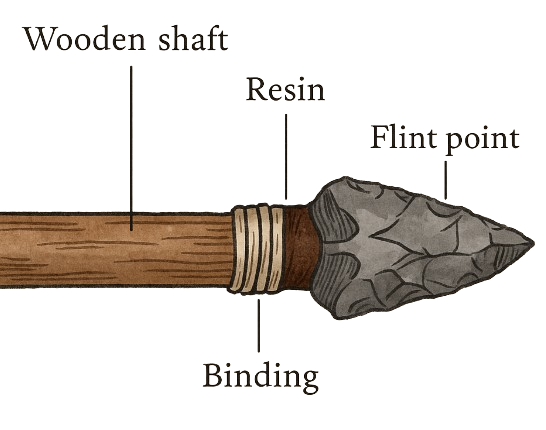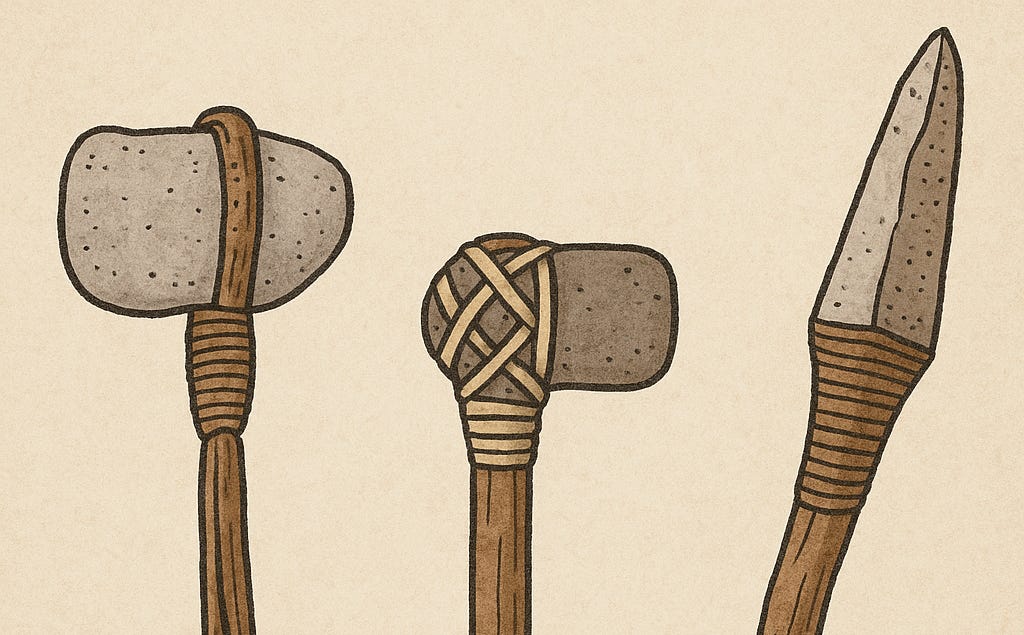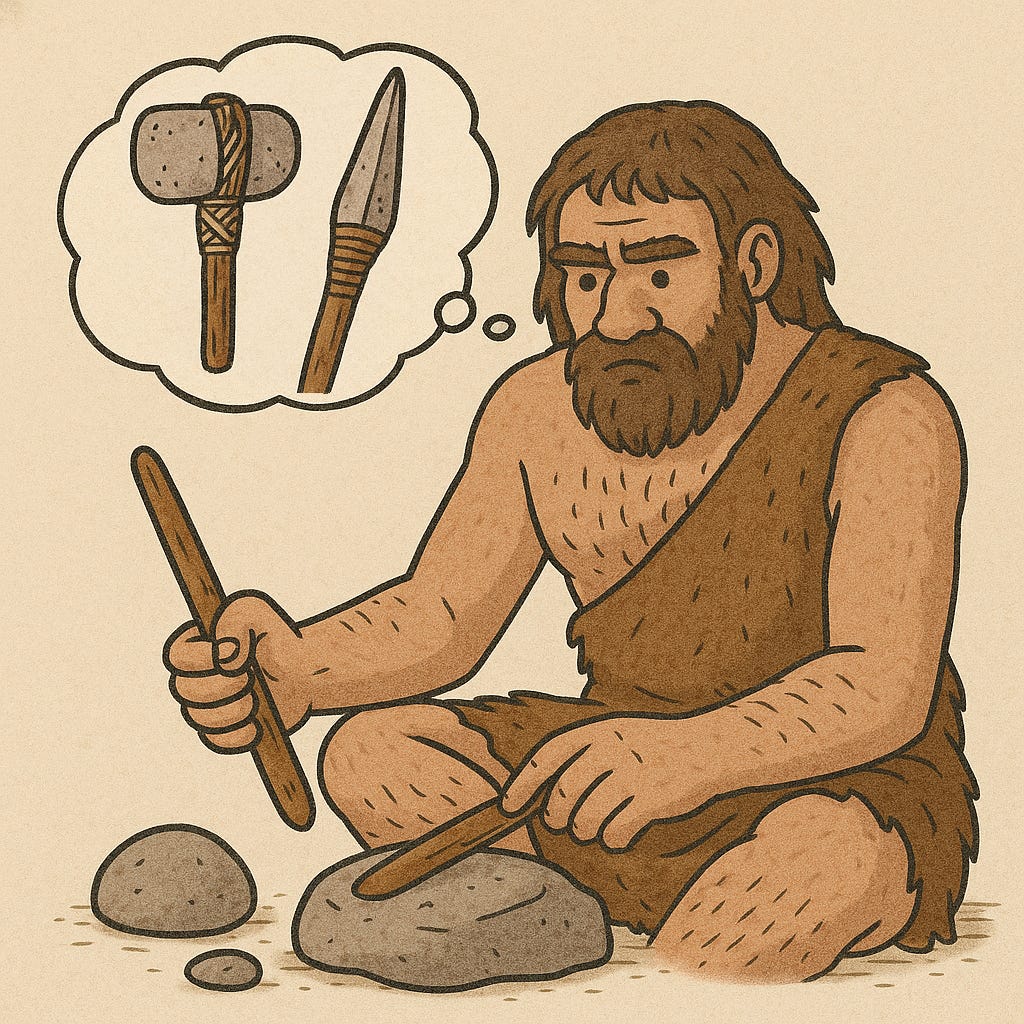Composite tools
What were the first tools made from multiple materials? And when did humans start making them?
How to make a composite tool
A composite tool is made by combining different materials—like a sharp stone “glued” to a wooden handle, or a bone spear reinforced with plant fibers. This kind of tool shows a leap in abstract thinking, planning, and craftsmanship.
The earliest known composite tools appear around 300,000 BCE, during the Middle Paleolithic. These included:
Stone-tipped spears: A wooden shaft with a carefully shaped stone point attached using natural adhesives like resin, and bound with sinew or plant fibers.
Bone or antler hafts (deer horns): Handles made from durable organic material, paired with cutting or scraping stones.
Fire-hardened shafts: Wooden points heated to make them harder, sometimes used alone or combined with stone or bone tips.
To make a simple composite spear yourself, you'll need:
A straight wooden shaft (like hazel or ash)
A flint point (knapped to a sharp edge)
Adhesive resin (pine pitch mixed with charcoal and beeswax)
Binding (plant fibers, rawhide, or sinew)
Steps:
Carve the end of the shaft to fit the base of your stone point.
Heat your resin to make it sticky, and apply it around the joint.
Bind the point tightly to the shaft with fibers or sinew.
Let it dry and harden.
Your spear is ready!
This level of construction required foresight and knowledge of materials—not just shaping stone, but gathering and processing glues, fibers, and shafts.
Historic value
The creation of composite tools marked a technological revolution. Unlike earlier single-material tools, composites were stronger, more effective, and better suited to specific tasks like hunting at a distance or processing carcasses.
Why does this matter?
Because it shows a new kind of thinking: humans were now engineering tools, not just using what they found. It also coincides with growing evidence of planned hunting, territorial adaptation, and symbolic thinking—all signs of rapidly evolving intelligence.
These tools weren’t just functional—they were the foundation of innovation. Without them, we wouldn’t have reached more advanced crafting like bows and arrows, or eventually metal tools. They were a bridge between instinct and ingenuity.
Impact on technology
Some of the technologies that composite tools unblocked:
Boats
Writing
References
[1] https://australian.museum/learn/science/human-evolution/complex-technology/




Very interesting. Thanks.
The birth of engineers! ;)